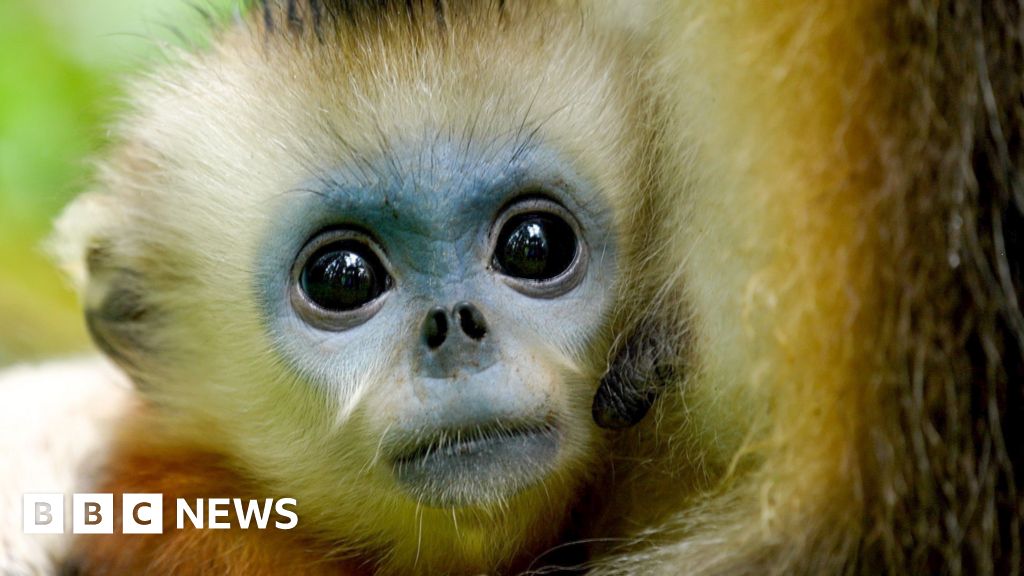The battle to save China's rare snub-nosed monkey
Until the 1980s, people roamed the mountains of Shennongjia in central China hunting monkeys for their meat and fur. Poor farmers were still clearing vast areas of trees, and as their environment collapsed around them, so did the local population of golden snub-nosed monkeys, dropping below 500 in the wild.
This was the situation when new graduate Yang Jingyuan arrived in 1991, still in his early 20s. The monkeys' home was being destroyed by logging so their numbers were going down fast, he says. Now it's being protected, and the monkey figures are really improving. Nowadays, Professor Yang is the director of the Shennongjia National Park Scientific Research Institute and probably no one knows this species better than he does.
Prof Yang, 55, has spent his entire working life trying to understand and protect this endangered sub-species of snub-nosed monkeys, which exist only in these mountains in Hubei province, and he took us into the forest to meet them. I asked if it was true that he now understood what many of their noises meant. Yes, he said. Yeeee is telling others the area is safe. They can come over. Wu-ka means it's dangerous. Be careful. And, sure enough, there he was making various noises as the monkeys came down out of the trees, holding our hands, touching us, and checking out the humans.
Though the national park was created in 1982, it took years for struggling farmers to stop destroying this environment. People were very poor in these mountains and hunger was a real concern. There was no concept of protecting wild animals, said ranger Fang Jixi. Education and integration of the local community into conservation efforts became crucial to the project’s success.
As a result, the population of golden snub-nosed monkeys has steadily risen to about 1,600, with hopes for continued growth. Prof Yang remains optimistic about their future, emphasizing the importance of habitat protection and availability of resources for their survival.

















